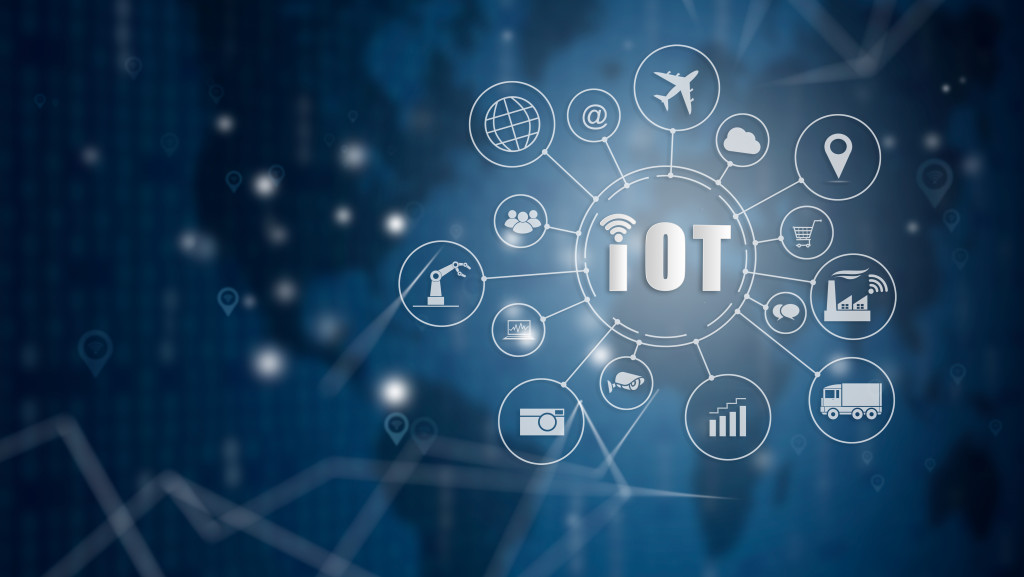One of the first machines ever invented in the early 1700s was the atmospheric steam engine, which helped miners remove water from the mine shafts. Steam engines were also used to replace manual oars to power boats and replace horses in locomotives during the transportation of goods to different cities in the 1800s. These events signaled the first industrial revolution.
From then on, people learned how to harness electrical energy instead of steam power in the second industrial revolution. At this time, the different industrial sectors started mass-producing goods for commercial purposes, especially because more machines were invented to make this development possible.
The third industrial revolution gave birth to the invention of computers and the emergence of the worldwide web in the late 20th century. It was dubbed the “Digital Revolution” because of the popularity of using electronic devices and information technology to automate the processes in production.
And then, there was the arrival of the fourth industrial revolution, or Industry 4.0, which still correlates to the digital revolution but is developing at an unprecedented rate. These significant events were deemed revolutions not only because they could disrupt the status quo in every industry but also because they permanently transformed how these industries worked.
What’s New in the Fourth Industrial Revolution?
It’s been a decade since the industry players learned how to computerize and automate their processes in the manufacturing sectors. During that time, the world was introduced to modern technologies such as artificial intelligence (AI), the Internet of Things (IoT), and even genetic engineering, to name a few.
Billions of people across the globe are also connected through their mobile devices and the internet, especially since all these technologies paved the way for the rise of the digital age. Nowadays, it’s much harder to find people who don’t know what the internet is rather than find ones that do. That’s how dependent society has become on modern technology for their day-to-day lives.
But that’s not all modern technology has achieved during Industry 4.0 because it has become an essential and powerful tool to the economy. In fact, it’s no longer seen as something that’s only nice-to-have; modern technology is deemed as a must-have, especially if you want to gain a competitive edge against other businesses in the same market niche.
And this is not the end for Industry 4.0. Some might even say it’s just the beginning, considering how revolutionary the existing technologies are today. To give you an idea, here are two of the most popular technologies in the fourth industrial revolution that are catapulting society into the future:
Artificial Intelligence (AI)

The main difference between humans and computers is that people have the ability to think critically. That’s why people handle machinery and not the other way around. But humans are also susceptible to errors because external factors can influence their ability to think and act.
This makes humans often inaccurate and imprecise, which can be considered flaws in mass production. But artificial intelligence can fix that because it uses technology—not the human body—to think like a human, except that they’re better. AI has the ability to recognize complex patterns and process information from mountains of unsorted data much faster than any human being can.
That’s why AI is considered to be changing businesses across all economic industries, particularly through automating and streamlining their otherwise time-consuming processes. Take, for instance, the high-performance equipment from sblmachinery.com and how their automated solutions are helping printing businesses improve their overall productivity.
Internet of Things (IoT)
Everything that can be connected to the internet or identified by other devices falls under the scope of the Internet of Things. While the IoT can be very beneficial to businesses in various industries, they’re more commonly used by everyday consumers who depend on smart technology and devices.
The best example of this is the smart homes which have grown in popularity over the last decade. By installing smart-enabled devices around the house, the homeowner will be able to command their thermostat, lighting, motorized blinds, or even their sprinklers just by using their voices and the apps on their phones.
Aside from smart homes, there are also smart factories, which can only be made possible through IoT. These smart factories are being primarily governed by interconnected machines that can communicate with one another using IoT. This means that sooner or later, there will be little use for constant human intervention in factories for mass production because the machines can take care of everything.
At this point, there’s really no telling what the future holds, especially in innovation and development. This unprecedented rate at which modern technology shapes the world that people live in can be frightening, but it can also become a tool for the greater good.



